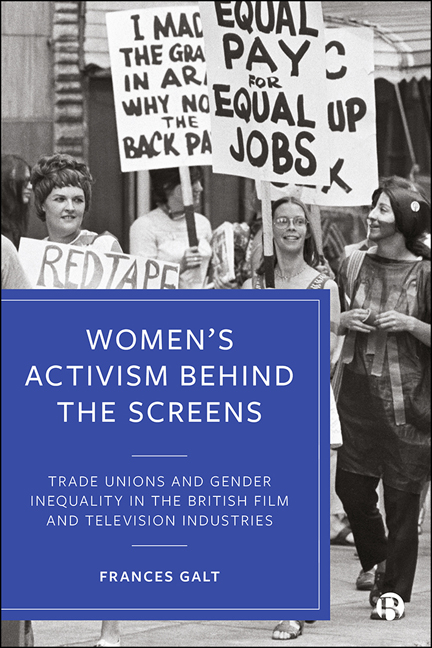 Women's Activism Behind the Screens
Women's Activism Behind the Screens Summary
This book has analysed the relationship between women and trade unions in the British film and television industries between 1933 and 2017. In doing so, it has contributed a longitudinal case study of an individual union to the British historiography on women's trade union participation. As the Introduction illustrated, existing scholarship has primarily focused on the relationship between women workers and trade unions in unique periods of women's union activism: during the formative years of the British labour movement from the 1870s to 1914, and during women-led industrial disputes in the 1960s to 1980s. By developing a longitudinal case study – the framework of which was informed by Nancy Gabin's examination of women and the United Auto Workers (1990) – this book has addressed its two central objectives. Firstly, it has identified discrepancies between the union's official policies on gender equality and the experiences of women working in the British film and television industries. Secondly, it has explored the nature and experiential dimensions of women's participation and identified the factors which enabled and inhibited their participation between 1933 and 2017. This analysis was underpinned by three central themes: the operation of the ACT(T)/BECTU's gendered union structure, women's activism within such structures, and the relationship between class and gender. This chapter summarizes the main conclusions in relation to these three themes and provides an overview of the arguments advanced in each chapter.
Firstly, this book has argued that a gendered union structure was institutionalized from ACT's establishment and maintained through a belief system that women's issues were not trade union issues. This belief system manifested in hostility towards women's demands from male union officials and apathy from the rank-and-file membership, as evidenced by their response to the recommendations of the Patterns report. Secondly, this book has advanced that separate self-organization was integral to women's activity within the gendered union structure. The impact of the Committee on Equality, established in 1973, and the formalization of women's representation during the 1980s has illustrated that separate self-organization provided women activists with an essential space and voice to discuss their gender-specific concerns, develop consciousness and skills and formulate policy.
- Type
- Chapter
- Information
- Women's Activism Behind the ScreensTrade Unions and Gender Inequality in the British Film and Television Industries, pp. 197 - 206Publisher: Bristol University PressPrint publication year: 2020


